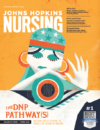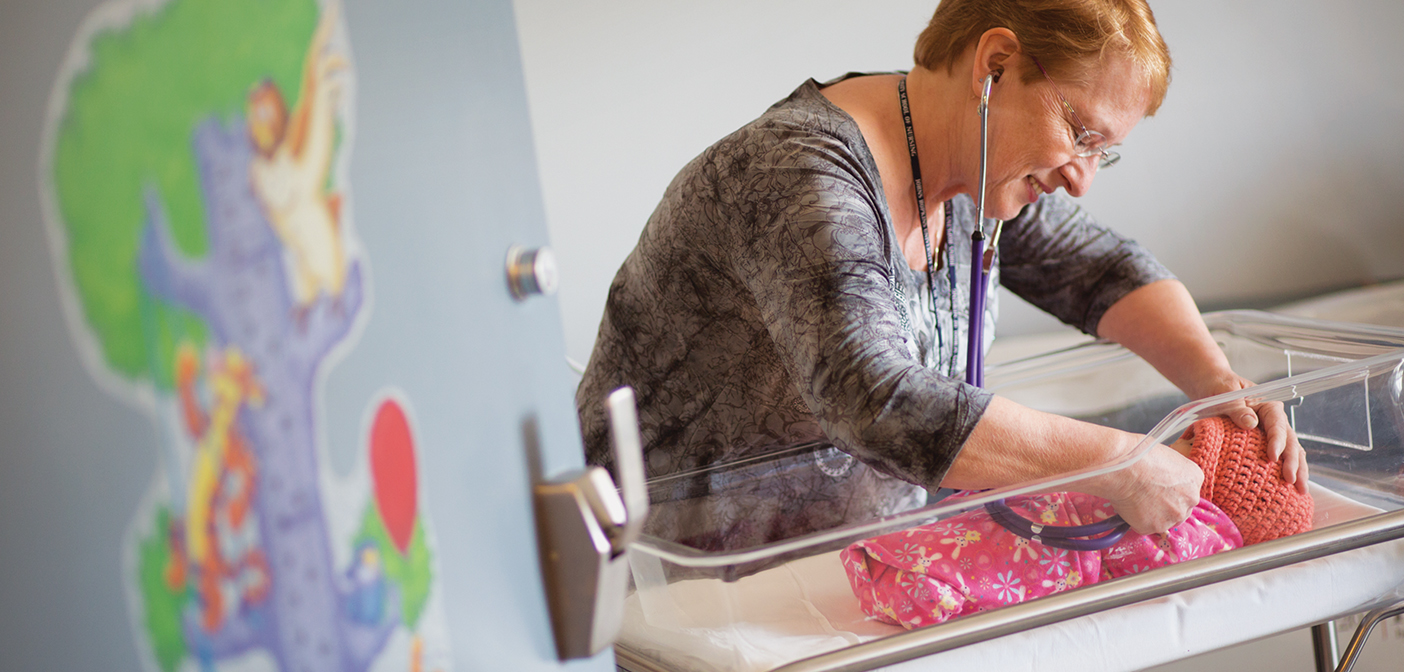By Lester Davis
Center helps babies by helping mothers get clean
Amanda Seldomridge was in search of a miracle when she walked through the doors at the Center for Addiction and Pregnancy at Johns Hopkins Bayview Medical Center. Close to nine months pregnant with her third child, a girl she’d already named Faith, Seldomridge, 35, said she had unsuccessfully battled an addiction to heroin and cocaine and desperately wanted to break the cycle before giving birth.
Seldomridge’s small hometown didn’t have the type of treatment options found at the Bayview center, known as CAP. So, she packed a bag and headed to Baltimore in search of help. “I prayed and prayed for this program and for someone to save me,” Seldomridge says. “But I just couldn’t stop on my own and I had to think about my baby.”
Many of the mothers who turn to CAP have a similar story, according to Freddie Jenkins, MSN, RN, a patient care manager. “The positive is that they’re here and they’re trying to do something right,” Jenkins says. “Most of us wouldn’t have survived what some of these mothers have been through.”
“The positive is that they’re here and they’re trying to do something right. Most of us wouldn’t have survived what some of these mothers have been through.”
— Freddie Jenkins, MSN, RN
For the women fortunate enough to make it to CAP, the program serves as a refuge of last resort. The facility serves about 50 women at any given time, and includes a 16-bed inpatient shelter for individuals who are homeless or who can’t live at home because of abuse, a non-supportive family, or others in the house who are using drugs, Jenkins says.
Photos by Chris Hartlove | Freddie Jenkins says the center serves about 50 women at any given time.
Patients are provided with counseling and attend multiple group sessions per day. The expecting mothers are also provided with access to a psychiatrist and with expert prenatal care, according to Jenkins. The program, she adds, has served pregnant women in their teens to their early 40s. Some are court-ordered to join the program but many others come of their own volition.
In addition to providing prenatal care and mental health screenings, the center helps expecting mothers understand that every cry, twitch, or spasm from a newborn is not necessarily a result of their addiction.
“It’s very important to help the new mothers distinguish between typical newborn behavior and symptoms related to withdrawal,” says Martha Valez, parenting coordinator. “If the mother feels insecure or anxious, the baby feels that. So we have to work with the mothers to calm them. And in two or three months you’d never know that their baby was exposed to drugs.”
“After mom delivers they will be so upset and just start crying if the baby shakes a little. I just hug them and tell them, ‘Sure, you made some wrong decisions, but let’s move forward.'”
— Cheryl Harrow, CRNP Cheryl Harrow, above, and Christine Lewis, below, at the Center for Addiction and Pregnancy.
Cheryl Harrow, CRNP, a family nurse practitioner in the newborn nursery, explains that infants experiencing neonatal opiate withdrawal syndrome are extremely hyper-responsive and often react strongly to a ringing phone or strong smells like perfumes or cigarette smoke. “Every baby can tell you exactly what they want and need,” and it’s the job of the nurses to help the mothers balance their feelings of guilt with the real needs of their infants, she says.
“After mom delivers they will be so upset and just start crying if the baby shakes a little. I just hug them and tell them, ‘Sure, you made some wrong decisions, but let’s move forward.’ “
Seldomridge credits the staff with going above and beyond to help her recover from addiction and care for her baby.
“I want my daughter to know that I tried to turn it around and be a good mom,” she says. “I fought to bring her into the world healthy and with the support she needs. I made a lot of mistakes but I’m trying to better myself.”

